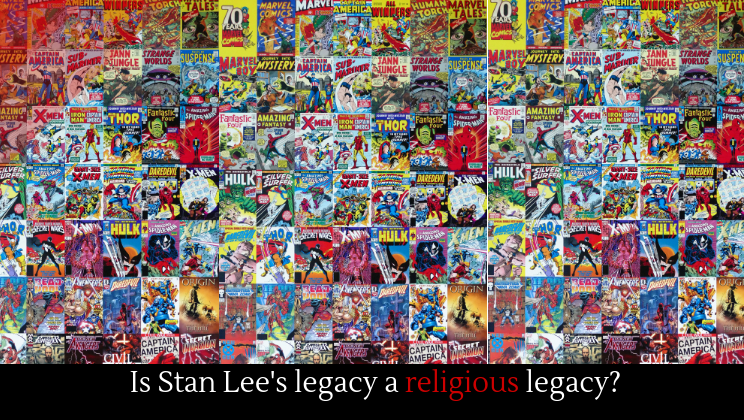Is Stan Lee’s legacy a religious legacy?
Posted by Josh Taylor / November 17, 2018
Stan Lee recently passed away at age 95, and his death has inspired many fans to ponder his legacy. His death has also inspired some to remind us that Lee, like the heroes he created, was flawed. This piece is certainly about Lee’s legacy, but not about the man himself. Instead, this piece ponders the extent to which the characters and universes Lee created have taken on a life of their own as allegories and myths.
At first blush, such a proposition might seem absurd, disrespectful, or perhaps even blasphemous, depending upon your own religious background. But there has been a long connection between fiction––even superhero fiction, if you will––and religion. Take the ancient Indian epic, the Ramayana, as an example. It’s the story of Rama, a divine prince who must rescue his wife Sita from the clutches of an evil demon-king. Hinduism influenced the story, but the story also influenced Hinduism. Some Rama devotees tattooed his name all over their bodies––a practice that continues today. About a thousand years after the Ramayana was composed, another of its characters began to be venerated as a deity: Hanuman, one of India’s most popular deities. Today, watching dramatizations of the Ramayana is considered a religious activity.
While comic book fans may not venerate Spiderman as a deity, it is still worthwhile thinking about Stan Lee’s creations through the lens of religion, because that helps shed some light on their impact on the modern world––and, as a result, his legacy.
The allegorical meanings of Stan lee’s creations have been well covered elsewhere. I’m not going to offer allegorical interpretations of specific characters or stories here. Instead, I suggest that Stan Lee’s oeuvre can be interpreted collectively as an allegorical exploration of the individual’s place in the modern, urban world. Lee’s characters are so compelling because they have escaped the sea of anonymity characterizing modern life. Unlike other superheroes, like Superman, Lee’s characters are not apotheosized, idealized humans. Instead, they are flawed. As flawed people, they must confront their own weaknesses even as they face overwhelming outside forces. They must constantly choose good, even when evil is the easiest and most compelling option. As readers, we can identify with the characters’ struggles, and we see our own impossible choices reflected in their lives. We see ourselves as the heroes of our own stories, battling against the behemoths of bureaucracy and the specters of sickness and death.
Lee has also given us a new mythology. Mythic stories can’t really be interpreted on the reality-fantasy spectrum, because mythic stories aren’t about factual events. Obviously aliens never invaded Manhattan and obviously radioactive spider bites won’t give you superpowers, that’s not the question. Instead, mythic stories are dramatizations of the human experience, and their narrative structure order a chaotic world. We like myth because it shows us our fears and hopes in a different light. Lee’s superhero creations help us make meaning from the chaos of the modern world. They provide stability at a time of tremendous instability––they dramatize the difference between good and evil, and the importance of good’s triumph. They remind us that each human is unique and powerful in her or his own way, the lack of real radioactive spiders notwithstanding.
It’s fitting to think about Lee’s work in this way. He himself was not institutionally religious, but he still was interested in questions like the ones I’ve explored here. Ultimately, Lee was interesting in the questions that impact us most as humans, and his work offers some answers.
More news.
Comments are off for this post.